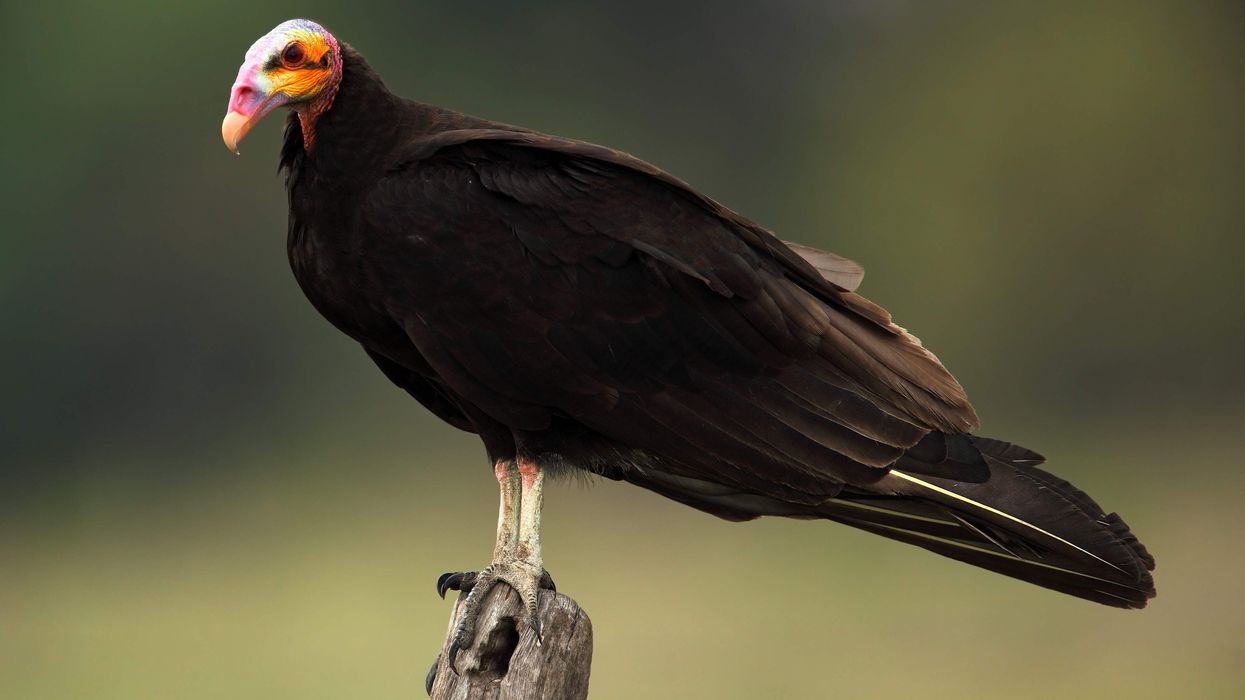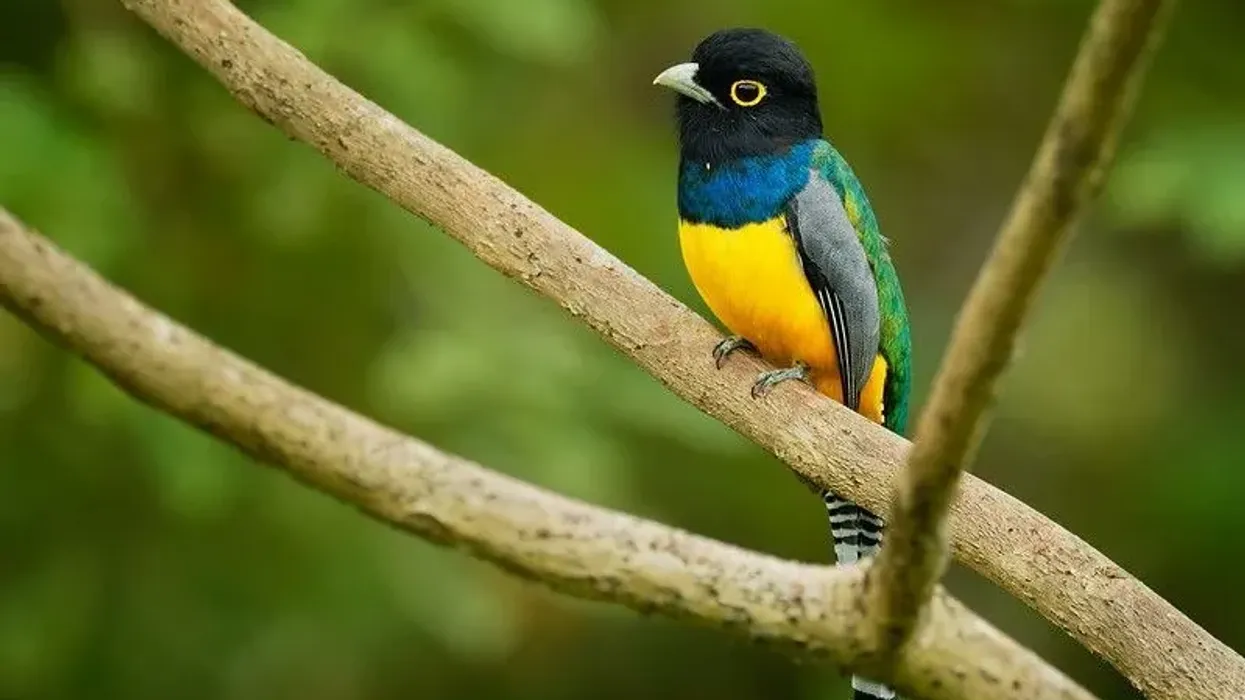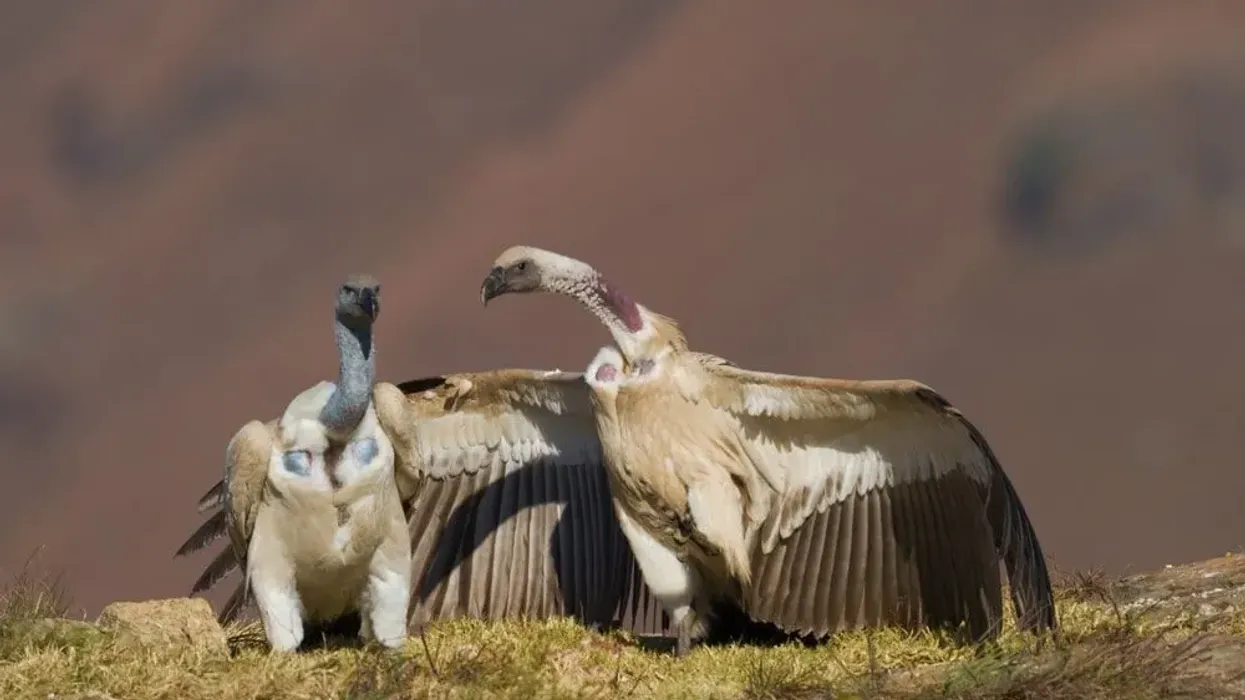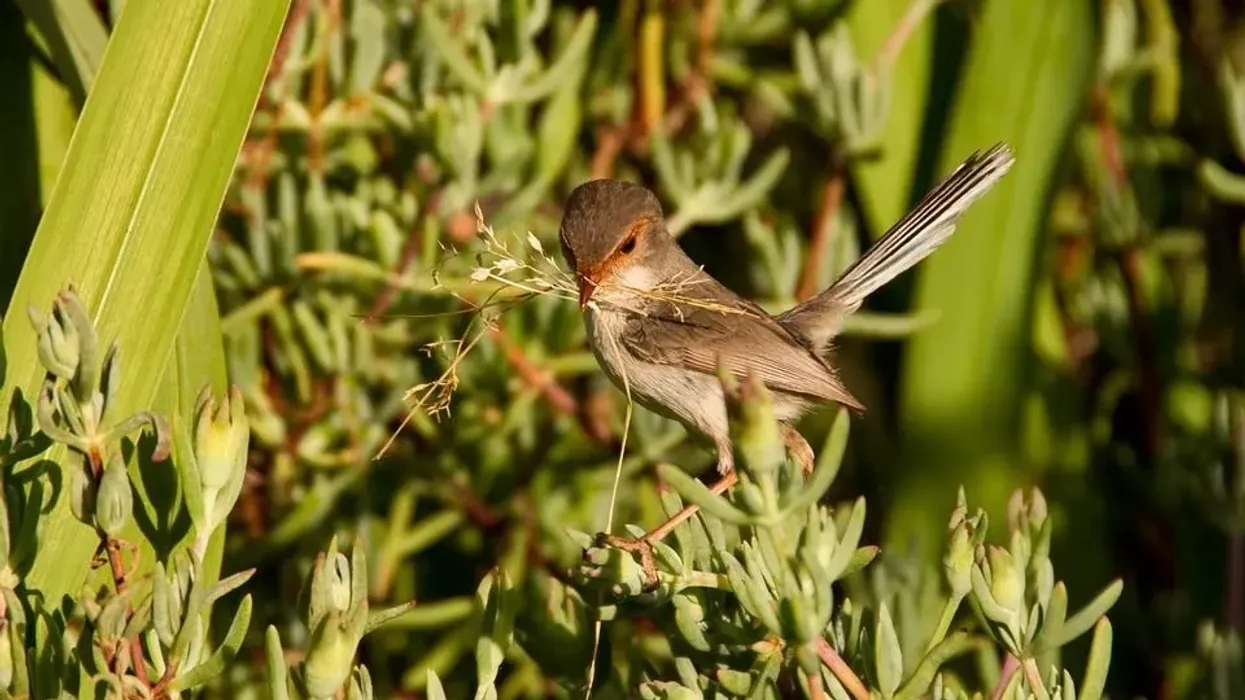Lesser yellow headed vulture (Cathartes burrovianus) are birds who come from the family genus of Cathartidae and Cathartes. They are overall black colored birds with a featherless face.
The skin on their crown area is blue-gray colored and their forehead is reddish colored. The rest other is coverd by yellow skin. The beak is flesh colored and the eyes are red.
This vulture species lives in its natural habitat across Central and South America and can be seen in marshy and lowland areas. They feed on dead animals meat and sometimes hunt down small animals from the marshy swamps. They are solitary species who fly alone and form pairs during their breeding season.
The female vultures lay their eggs on ground, on cliffs and inside caves and tree hollows. The babies born are without feathers and are blind and immobile.
This was just the introduction part. There are more interesting and funny lesser yellow headed vulture facts waiting for you in the descriptions below. Enjoy!
For more relatable content, check out these Egyptian vulture facts and mountain quail facts for kids.
Lesser Yellow-Headed Vulture Interesting Facts
What type of animal is a lesser yellow-headed vulture?
Lesser yellow headed vultures are birds of the world whose distribution range map includes Central America, South America and Mexico.
What class of animal does a lesser yellow-headed vulture belong to?
Lesser yellow headed vultures belong to the class Aves, order Cathartiformes. They are birds of the world who belong to the new world vultures family Cathartidae and genus Cathartes. They are scientifically known as Cathartes burrovianus.
How many lesser yellow-headed vultures are there in the world?
The exact population count of the lesser yellow headed vulture (Cathartes burrovianus) is not yet known. But there is a vague assumption that their population count is somewhere between 100000-1000000 across their range map.
Where does a lesser yellow-headed vulture live?
Lesser yellow headed vulture (Cathartes burrovianus) species inhabit lowland areas. They can seen in grasslands and savannas. They are commonly seen in marshy areas like mangroves and swamps. They also roam over dry lands in search of food.
What is a lesser yellow-headed vulture's habitat?
Lesser yellow headed vulture (Cathartes burrovianus) species enjoy a widespread distribution across Central and South America and Mexico. Lesser yellow headed vulture range map includes places like Argentina, Belize, Bolivia, Brazil, Chile, Colombia, Costa Rica, Ecuador, El Salvador, French Guiana, Guatemala, Guyana, Honduras, Mexico, Nicaragua, Panama, Paraguay, Peru, Suriname and Uruguay. They are not endemic to a single area.
Who do lesser yellow-headed vultures live with?
Lesser yellow headed vulture (Cathartes burrovianus) bird are solitary animals who are very rarely seen in groups. They fly alone with open wings in search of food.
How long does a lesser yellow-headed vulture live?
There is no valid information available on how long lesser yellow headed vulture birds live. Turkey vulture birds are known to have a lifespan of around 25 years.
How do they reproduce?
Lesser yellow headed vulture (Cathartes burrovianus) birds have no intention of building nests. They don't build nests and lay eggs in flat floors.
They lay eggs in caves, tree hollows, cliffs and high grounds. There is no exact information available about their breeding season but they are monogamous in nature.
After mating, female birds lay two pale cream colored eggs which have brown-gray colored spots at the bottom side. These eggs go through an incubation period of around 40-42 days. The chicks born are blind and practically immobile and featherless in the begining.
Slowly they attain their qualities and fledge after two to three months. Adult vulture birds feed their young through the process of regurgitating and explaining it will sound a bit gross but here goes.
Because it is very tough to fly food from field to their chicks, lesser yellow headed vulture bird eats the food and vomit the extra pre digested food in front of their chicks. Chicks usually feed on that vomit and attain life.
What is their conservation status?
According to IUCN red list, lesser yellow headed vultures are listed under the conservation status of Least Concern. They are available in good numbers across Central and South America and Mexico.
Lesser Yellow-Headed Vulture Fun Facts
What do lesser yellow-headed vultures look like?
Lesser yellow headed vulture (Cathartes burrovianus) bird species are big creatures from the new world vultures family Cathartidae. Their plumage is almost black. Young lesser yellow headed vulture species have a brown plumage.
Their whole body is covered with feathers except their face (head and neck). Their head is gray-blue in color and the rest skin portion on their face is yellow in color.
The forehead part is reddish in color. The bill is flesh tint colored and is hook like on the front part. They have vibrant red eyes.
The iris part is red in color and the pupil is black, together making the eyes wonderful. They have a comparatively smaller tail and bigger wings. The wings are black from outside and is a mixture of black and white colors in the inside.
The interior wing border is brown colored. Their legs are white in color.
The length range of their body is around 21–26 in (53–66 cm) with a magnificent wingspan of 59–65 in (150–165 cm). Their body weigh is estimated around 2.1 to 3.4 lb (0.95 to 1.55 kg). They are very much similar to the greater yellow headed vulture and turkey vulture species in terms of looks.

How cute are they?
For some people they might be elegant but generally they are a weird looking bird species.
How do they communicate?
Lesser yellow headed vulture (Cathartes burrovianus) species are solitary in nature. They are very rarely seen in groups. They communicate through body language and a low pitched hiss sound.
How big is a lesser yellow-headed vulture?
Lesser yellow headed vulture species are big birds of the world who are found across South and Central America and in Mexico. They grow to a size of 21–26 in (53–66 cm) with an amazing wingspan of 59–65 in (150–165 cm) and body weigh ranging between 2.1 to 3.4 lb (0.95 to 1.55 kg).
The black vultures are also big in size.
How fast can a lesser yellow-headed vulture move?
The exact lesser yellow headed vulture flight speed is yet to be known.
How much does a lesser yellow-headed vulture weigh?
Lesser yellow headed vulture species are birds of the world who grow to a size of around 21–26 in (53–66 cm) and their weigh ranges between 2.1 to 3.4 lb (0.95 to 1.55 kg).
What are the male and female names of the species?
There are no specific names given to vulture males and females. They are simple known as male or female lesser yellow headed vultures.
What would you call a baby lesser yellow-headed vulture?
Like all other baby birds, baby lesser yellow headed vultures are also known as chicks or young ones.
What do they eat?
Lesser yellow headed vulture bird species are scavengers and eat on dead animals. They are carnivorous birds like eagle and hawk and hunt on small animals for feeding purpose.
Are they dangerous?
Yes they are dangerous for they prey. But there are no valid information on they being dangerous to humans. But it's better to avoid any sort of clash with them. They are wild carnivorous big birds who have the potential of causing harm to humans.
Would they make a good pet?
Not at all. Keeping any vulture species as a pet won't be a good decision. They are wild birds of the world how won't stay as pets.
Did you know...
Lesser yellow headed vulture are generally not migratory birds. But even if they migrate, they keep the distance very short.
How many eggs do lesser yellow-headed vultures lay?
Lesser yellow headed vultures lay a clutch of two eggs on the ground and cliffs or in cave and tree hollows.
How to spot lesser yellow-headed vultures
Lesser yellow headed vulture bird species can be spotted in their natural habitat in marshy areas such as mangroves and swamps in South and Central America. They have an overall black plumage with featherless face. Their forehead is reddish in color and the crown is gray-blue in color.
The rest of the face is yellow colored. The beak is hooked and is flesh colored.
They have large wings for fast flight. Their eyes are red colored and their legs are white colored. They are similar to the Turkey vulture and greater yellow headed vulture bird species.
Here at Kidadl, we have carefully created lots of interesting family-friendly animal facts for everyone to discover! For more relatable content, check out these flamingo facts and birds of paradise facts pages.
You can even occupy yourself at home by coloring in one of our free printable vulture coloring pages.









